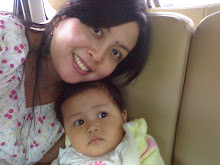How recognizing tired signs helps you get your baby to sleep
| “I know my baby gets really tired, but I can’t get her to sleep easily. I’ve tried everything to settle her but we’re both feeling tired and grizzly.” It’s important to learn to recognize signs of tiredness in your newborn. Usually feeding and playtime can be finished within an hour. By then your baby will be giving you signs of being ready to go back to bed: a change from being relaxed to clenching of fists, yawning, and rubbing of the eyes, jerky movements, facial contortions and frizzling. If you put your baby down as soon as you notice these signs and if you stick to a routine, keeping everything the same every day, your baby will find it easier to self-settle. Put your baby into her cot while she is still awake. If she cries, that’s okay. You can visit and soothe her by rocking or patting, but try not to pick her up. Babies should trust that mum will come, but they should also learn that they can put themselves to sleep. And remember, whatever your baby or child goes to sleep with is what they will need when they wake in the night. Make sure it's something such as a cuddly blanket or a soft toy -- that doesn't require you to be there. Dummies fall out and can't be found. If babies fall asleep at the breast, they will wake demanding to suckle. |
Sleep them safe
| Most cot death rate has fallen dramatically since parents started following recommendations to sleep babies on their backs. But there’s more you can do to cut the risk for your baby.
Here’s the latest advice on how to avoid sudden infant death syndrome (SIDS). |
No smoking during pregnancy
| Smoking during pregnancy is an important cause of sudden unexpected death in infancy because it damages babies before birth. Many women find that it is easier to give up smoking when they are pregnant. It is important to stop smoking as soon as possible after a pregnancy has been confirmed. A midwife or health practitioner can help pregnant women and other household members to quit smoking. |
Sleeping position – “Back to sleep”
| Babies should be put down to sleep on their backs. Babies who sleep on their backs are less likely to get their faces accidentally covered by sheets or bedding. |
Sleeping environment
| The recommended sleeping environment is having baby sleeping in a cot or bassinette near the parents’ bed.
Co-sleeping (a parent who sleeps with their baby in bed) is dangerous when:
the baby’s mother has smoked during pregnancy, or …
the adult in bed with the baby has been drinking, or taking drugs or medicines that might reduce their awareness of the baby, or
…the co-sleeping adult is excessively tired.
A small increase in SIDS risk from co-sleeping is also present for babies less than three months old, whether or not the mother smoked during pregnancy. |
Room sharing
| Babies who sleep in the same room as parents for the first six months are at lower risk of SIDS. |
Breastfeeding – ‘Breast is best’
| Breastfeeding has many benefits for mothers and babies. It helps to keep babies healthy and well. |

No comments:
Post a Comment